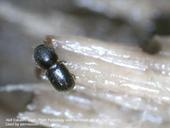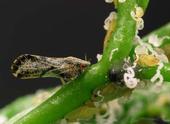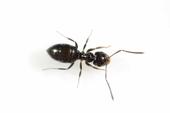- Author: Cheryl Reynolds

Learn about opportunities to receive continuing education hours. October is upon us and before you know it, we'll be wrapped up in the busy holiday season. If you hold a license or certificate from the California Department of Pesticide Regulation (DPR) and have a last name that begins with letters A through L, this is your year to renew. DPR encourages license and certificate holders to avoid the end-of-the-year rush and submit renewal applications by November 1.
Early renewal has its advantages. DPR can take up to 60 days to process a renewal application. Submitting applications now not only avoids late fees and gives you time to fix any problems that DPR may find, such as not...
- Author: Beatriz Nobua Behrmann

[Originally published in the Fall 2018 issue of the Green Bulletin. Modified slightly from original.]
Invasive wood-boring beetles are attacking hundreds of thousands of trees in southern California, including commercial avocados, and trees within urban landscapes and wildland environments.
The invasive shot hole borers (ISHBs) consist of two closely related and morphologically identical species of beetles in the genus Euwallacea: the polyphagous shot hole borer and the Kuroshio shot hole borer. Despite their small size (1.8–2.5 mm) (Figure 1), these beetles are causing big...

The Asian citrus psyllid is an insect that can carry a deadly tree disease called Huanglongbing or citrus greening. To help educate people about the seriousness of this disease, how it spreads, and how to deal with it, the UC IPM program has published an updated version of the Pest Notes: Asian Citrus Psyllid and Huanglongbing Disease, by experts Elizabeth Grafton-Cardwell and Matt Daugherty.
- Author: Siavash Taravati

[From the Fall 2018 issue of UC IPM's Green Bulletin newsletter]
The dark rover ant (Brachymyrmex patagonicus) is an invasive species which is increasingly being noticed in Southern California. It is a nuisance species that invades structures as both workers and winged (alate) individuals.
This article aims to introduce structural and landscape pest management professionals (PMPs) to the dark rover ant and includes several important references for readers to learn what is currently known about its biology, behavior, and control.
Identification
Dark...
![Mallow (cheeseweed). [Credit: Jack Kelly Clark]](https://ucanr.edu/blogs/UCIPMurbanpests/blogfiles/55647small.jpg)
Controlling weeds can be challenging to landscape professionals or home gardeners since landscapes often include a mix of turfgrass, annual plants, herbaceous perennials, shrubs, and trees.
The newly revised publication Pest Notes: Weed Management in Landscapes by Area IPM Advisor Cheryl Wilen, presents an integrated approach to weed management to help ensure weed control efforts are effective, environmentally-sound and economical. This science-based publication includes information on methods such as pre-planting considerations, the importance of weed identification, nonchemical practices such as using mulches and barriers, weed management...


